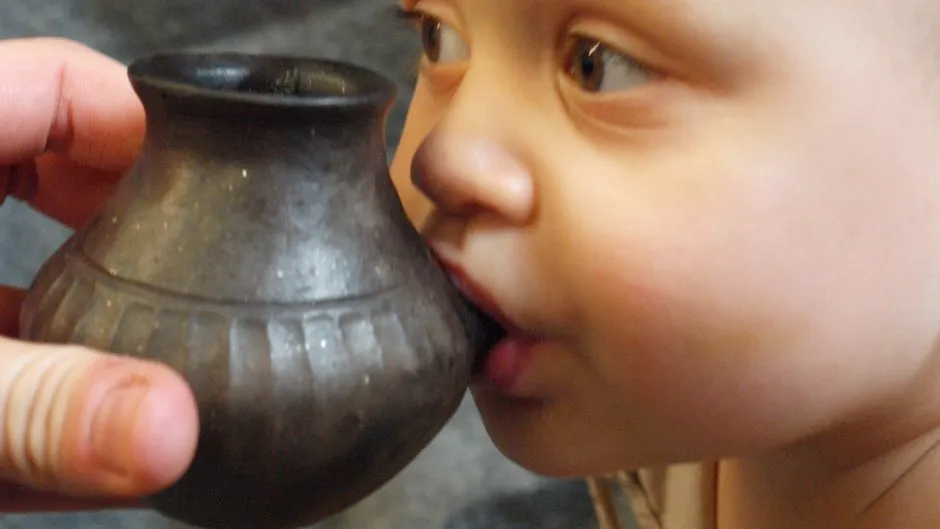Prehistoric European babies may have been fed animal milk using the equivalent of modern-day baby bottles, according to new evidence uncovered by researchers.
Chemical analysis of food traces in small clay vessels unearthed from ancient child graves indicates the milk came from grazing animals.
The University of Bristol scientists said their findings, published in the journal Nature, offer clues on weaning practices during prehistory nearly 2,500 years ago.
They added that prior to the study, the only evidence for weaning came from chemical analysis of infant skeletons.
Read more about archaeology:
- Stone Age chewing gum reveals history of Scandinavia
- First proto-urban communities experienced overcrowding, infection and violence
- Early human shows signs of right-handedness
Measuring about 5cm-10cm wide, the vessels examined by the researchers were deemed small enough to fit within a baby’s hands.
They also featured extremely narrow spouts – presumably to enable suckling.
Some of these vessels also contained feet and were shaped like imaginary animals.

The scientists were initially unsure of their function – with previous theories suggesting they may have been feeding vessels for the sick or infirm.
To investigate, the researchers selected three vessels unearthed from ancient child graves in Bavaria, Germany, dated between 1200 and 450BC.
The items were discovered next to remains of children aged between zero and six years.
They then analysed the chemical composition of the food traces in these vessels, which showed the presence of fatty acids associated with dairy products such as milk.
Evidence indicated that this milk came from animals such as cows, sheep or goats – ie, livestock which have unique digestive systems that allow them to chew food more than once – although the specific type of animal that provided this milk was not established.
Science Focus Podcast:Is the cure for cancer hiding in human breast milk?
In this episode we speak to Professor Catharina Svanborg, whose researchers pioneering research is investigating whether a chanced-upon compound within human breast milk with tumour-killing properties could give us the upper hand in the war against cancer.
According to the researchers, the “presence of these three obviously specialised vessels in child graves combined with the chemical evidence confirms that these vessels were used to feed animal milk to babies”.
They believe this milk was given either in place of breast milk or during weaning on to supplementary foods.
The scientists said their research is the first to offer evidence that prehistoric babies were fed animal milk using vessels equivalent to modern-day baby bottles.
They believe their findings open the way for investigations of feeding vessels from other ancient cultures worldwide.
Dr Julie Dunne, from the University of Bristol’s School of Chemistry and lead author, said: “These very small, evocative vessels give us valuable information on how and what babies were fed thousands of years ago, providing a real connection to mothers and infants in the past.
“Similar vessels, although rare, do appear in other prehistoric cultures (such as Rome and ancient Greece) across the world.
“Ideally, we’d like to carry out a larger geographic study and investigate whether they served the same purpose.”
Follow Science Focus onTwitter,Facebook, Instagramand Flipboard
